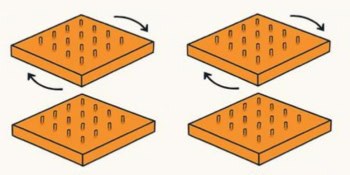CDs and DVDs could soon be able to hold much more data thanks to two new devices created by American and Japanese scientists. Michael Huang of the University of California at Berkeley and colleagues have built a tiny ultraviolet laser from zinc oxide nanowires (M Huang et al 2001 Science 292 1897). Meanwhile, Satoshi Koizumi of the National Institute for Materials Science in Japan and co-workers have successfully adapted the electronic properties of diamond to create an ultraviolet light-emitting device (S Koizumi et al 2001 Science 292 1899). Short-wavelength devices like these are crucial for ultra-high-density optical data storage.
Optical data systems rely on a beam of light to read information from a storage medium. But there is a fundamental constraint – known as the diffraction limit – on how tightly the beam of light can be focused. This limit is directly related to the wavelength of the light: the shorter the wavelength, the smaller the spot of light can be made. A more tightly focused ‘reading’ beam would allow data – for example, the pits in the surface of a CD – to be packed closer together in the storage medium. Short-wavelength light is emitted by materials with large energy gaps.
The laser developed by Huang’s team is based on a ‘nanocrystal’ that consists of parallel zinc oxide nanowires grown perpendicular to a sapphire substrate. Zinc oxide has a large energy gap that allows it to emit blue light, but when the nanowires are excited by another laser they emit ultraviolet light with a wavelength of 385 nm. Excitons – pairs of electrons and holes – within the zinc oxide recombine to emit the light. This process is boosted in the virtually one-dimensional wires because the excitons are spatially confined, allowing them to recombine more easily. The laser cavity that amplifies the light is formed by the reflecting interfaces between the nanocrystal and the sapphire substrate at one end, and the surrounding air at the other.
Koizumi and colleagues exploited the large ‘indirect band gap’ of diamond to make their device. This energy structure – similar to that of silicon – makes diamond reluctant to emit light, but the Japanese team overcame this problem by doping the p- and n-layers of a pn junction with boron and phosphorous, respectively. Excitons recombine within the LED to emit ultraviolet light with a wavelength of 235 nm. Koizumi’s team believes that some weaker peaks at other wavelengths will disappear when the low level of impurities in the crystal is reduced further.


